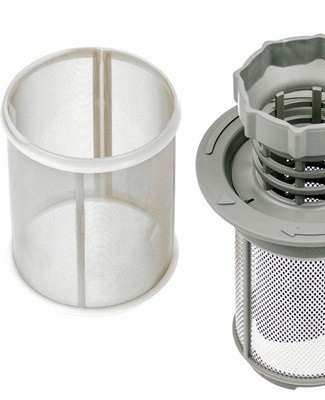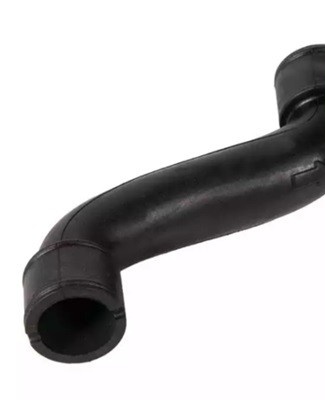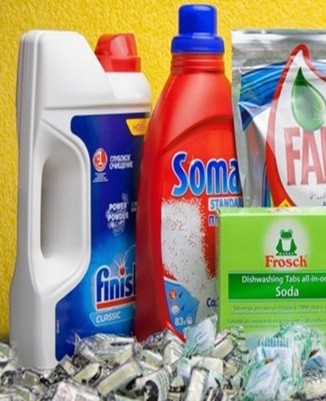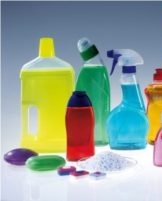TOP 8 methods to quickly remove an unpleasant smell from the dishwasher
Dishwashers are often sensitive to odors inside their structure. This can be facilitated by violations of the rules for using the device and technical malfunctions. The device should be cleaned at least once every few months. Otherwise, the machine will not cope well with cleaning the dishes or completely fail in advance. Let's see how to clean properly and how to get rid of unpleasant odors from the dishwasher.
The main reasons for the appearance of an unpleasant odor
There are several main causes of unpleasant odors inside a dishwasher. These are the formation of mold, residues of unwashed food, incorrect connection of the drain, violations of the rules for using the device, as well as the incorrect dosage of detergents.
Mold
Unpleasant odors in the dishwasher can be caused by mold. It forms in hard-to-reach places, such as a drain filter, water supply and drain pipes, a door cuff, a tubular electric heater. This makes mold difficult to identify and eliminate.
It can enter the device if it is in a room already infected with mold. Its formation is facilitated by high air humidity, temperature and lack of normal ventilation.
To prevent the development of mold, the machine should be regularly ventilated, leave it open and do not keep wet dishes in it for a long time. If you find traces of mold in the dishwasher, thoroughly clean and rinse the contaminated areas with special detergents.
Poorly connected drain
If the dishwasher is not properly connected to the drain hose, odors from the drain can seep into the dishwasher. However, no amount of cleaning will get rid of it. It is necessary to properly connect the hose, using a siphon that traps leaking odors.

Violation of operating rules
Do not wash plastic tableware in the dishwasher. If you violate this rule, the device will smell of burnt plastic or glue, since plastic plates cannot be heated - they begin to melt at high temperatures.
Detergent dosage irregularities
Unpleasant odors in the dishwasher may appear due to incorrectly selected detergents or incorrect dosage. Some cheap products leave behind characteristic chemical odors. Quality products should be odorless or leave a pleasant fruity or floral scent.
Food residues
One of the main causes of dishwasher contamination is clogging caused by unwashed food residue. It is necessary to check and, if necessary, rinse the mesh filter located under the lower basket of the appliance.Also check the door surface and the underside of the machine for food residue.
Timely check and clean the drain pipe from dirt.
Basic methods to solve the problem
Whatever the cause of the problem, it must be solved as soon as possible, because the bacteria that form when the appliance is dirty penetrate the dishes and can harm human health. Also, if not properly maintained, dirt in the dishwasher can cause damage and malfunctions.
Inspection, cleaning and prevention
First of all, if a problem is detected, it is necessary to clean the sink. It is necessary to thoroughly clean the main filter, drain pipe, pipes and nozzles from blockages and dirt.
Strainer
First, rinse the mesh filter. It is located at the bottom of the car. This part should be cleaned regularly - once a week, since fats are actively accumulating there. Take out the lower basket and dismantle it. Remove the filter, wash it with soap and clear water and replace it.

drain pipe
Disassemble the dishwasher, remove all baskets. Turn it over on its back and unscrew the screws from the back cover. Unbutton the wiring harness. Unscrew the pump screw. Turn the pump off and unplug it. Check for blockages and rinse thoroughly, then reassemble the device.
Branch pipes
Check connections for contamination at least twice a month. If you use the trimmer actively and often, check and clean it every month to a month and a half.
Close the faucet to stop the flow of water to the device. Unscrew the inlet hose and the flow filter from the tap and the machine. Unscrew the flow filter.Thoroughly clean the inlet hose, filters and nozzles, then reassemble the machine, fitting the cleaned parts in place.

Spray nozzles
Soap and lime deposits, as well as bits of food from dirty dishes, like to clog the nozzles of the nozzles that supply water for washing dishes. As a result, an unpleasant odor forms in the machine, which, together with microbes, can remain on the plates.
In order to avoid the appearance of blockages in the sprayers, the water in the sink should be warm - about fifty degrees Celsius. Regularly check that the nozzles are not clogged and clean them promptly.
Odor Control Chemicals
There are a large number of chemicals on the market that help to quickly and effectively eliminate unpleasant extraneous odors inside the dishwasher. Remember that you cannot use tools that could damage the metal parts of the device. These are washing powders, as well as chlorine-based substances.
Also, when cleaning, do not use hard sponges and metal brushes, so as not to damage the interior surfaces of the sink.

Use of improvised means
In addition to special chemicals for cleaning, improvised tools that are in any household help get rid of dirt and unpleasant odors in the dishwasher. An effective method for cleaning the inside of the appliance is to use vinegar and regular baking soda.
A soda
Baking soda can help deal with minor contamination.Remove all dishes from the chamber, put baking soda on the drip tray and run the machine through a high heat wash cycle.
Stubborn dirt in the chamber can be removed with a soda paste and a brush. In this case, especially carefully, you need to clean the places where the door is connected to the camera body, since this is where dirt most often likes to accumulate.
The vinegar
Vinegar will help you when cleaning removable parts such as filters, hoses and pipes. They can be washed manually in a vinegar solution. Also, water and vinegar diluted in it can be used to clean the interior walls by wiping them with a dry cloth.
Dirt in hard to reach places can be removed with a toothpick or cotton swab. Alternatively, you can put a glass of vinegar on the bottom of the machine and run the washer on high.
Rules of maintenance and operation
Regularly clean the inside and outside of the appliance with a damp cloth. Do this daily after using the trimmer for its intended purpose.
Remove and rinse the colander once a week. Blockages should not accumulate there.
Every six months, clean the door gasket using special chemicals sold at household chemical stores.



